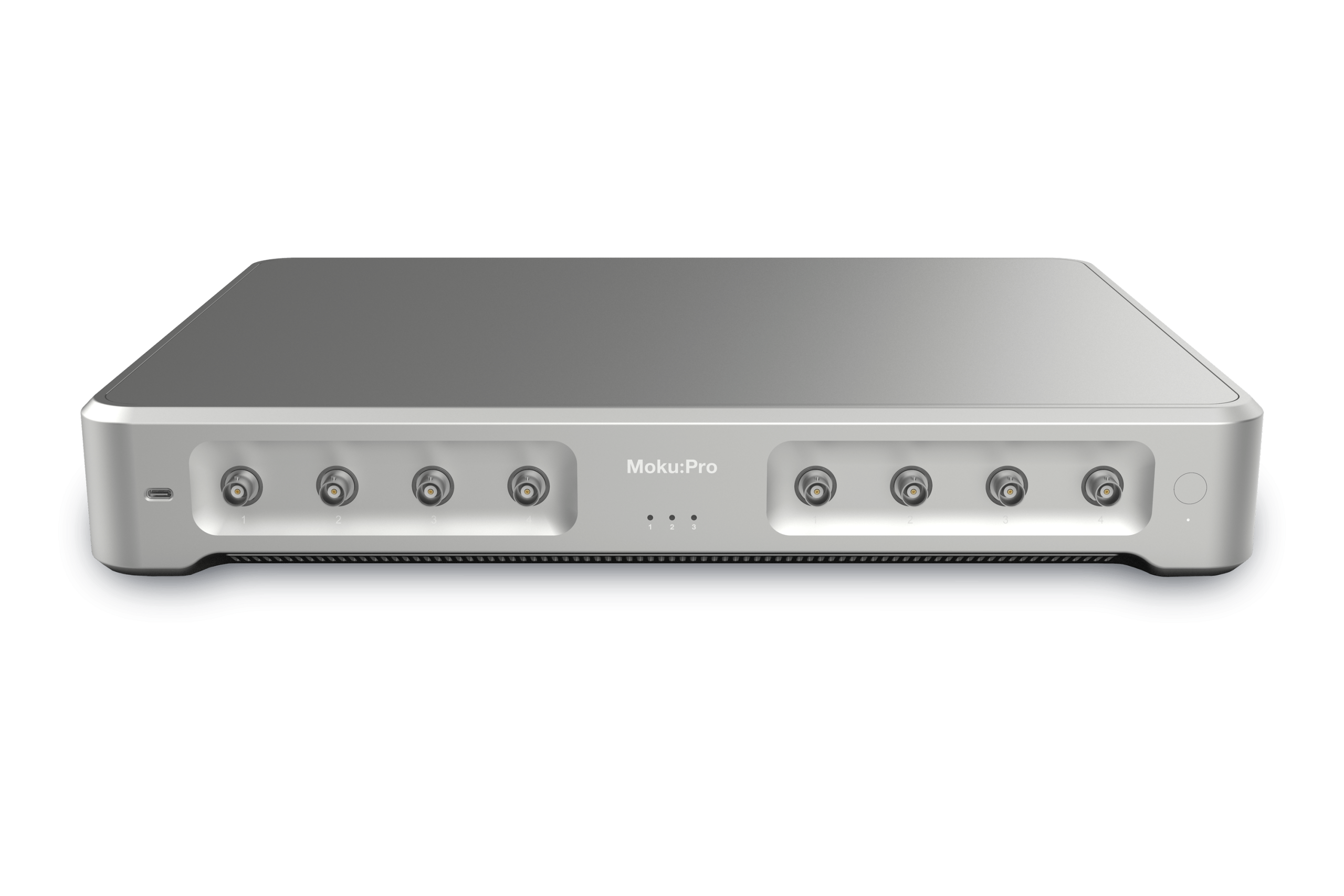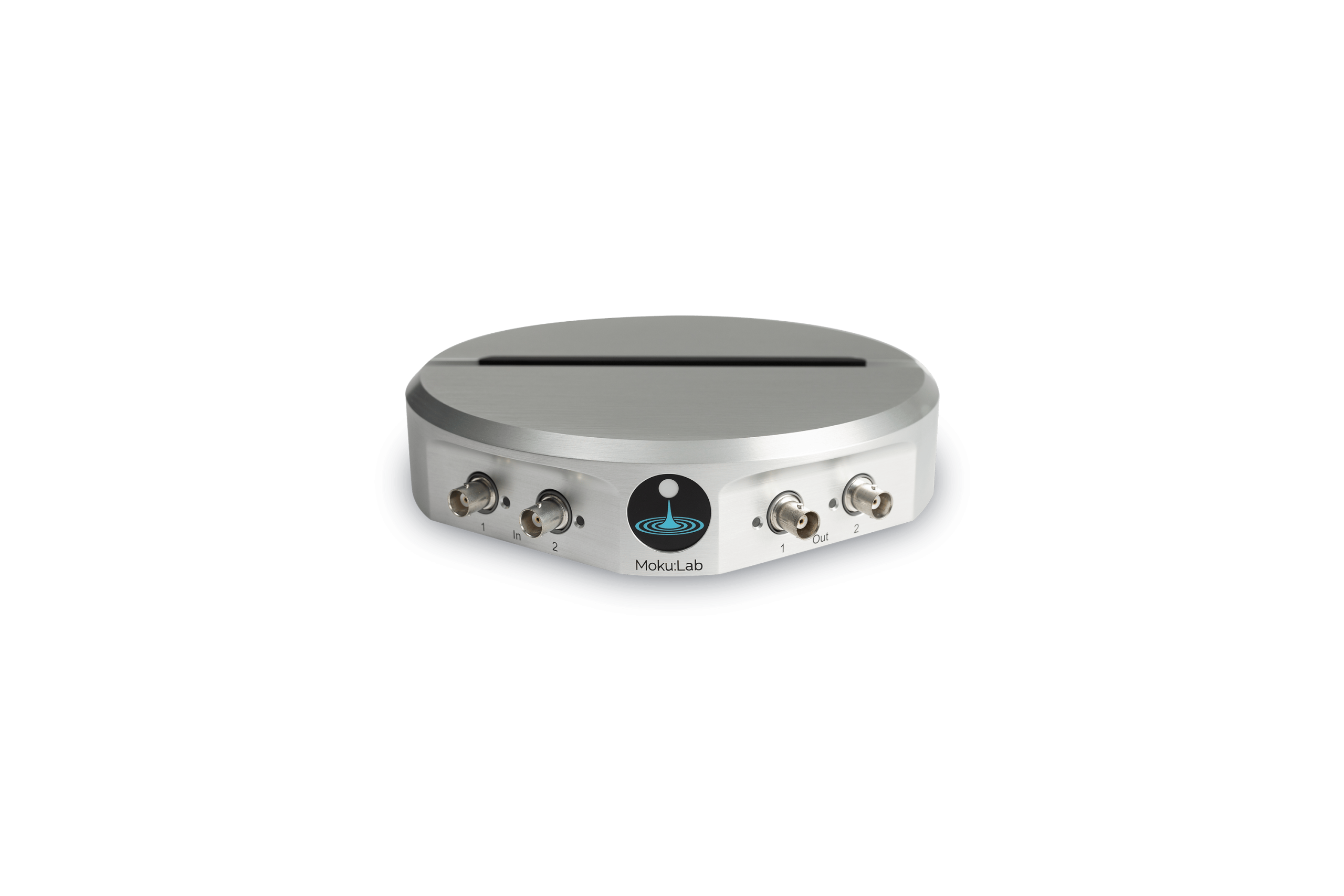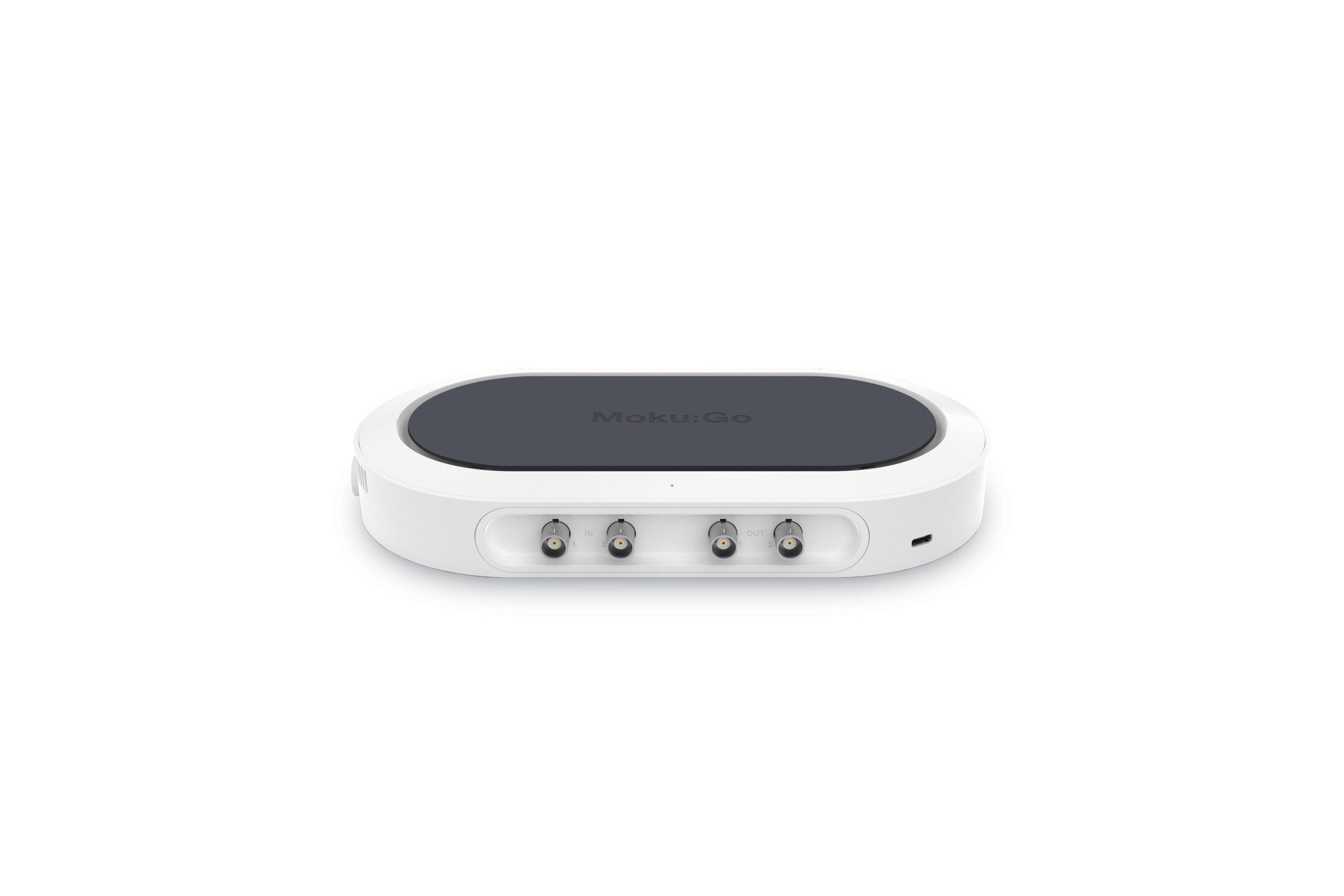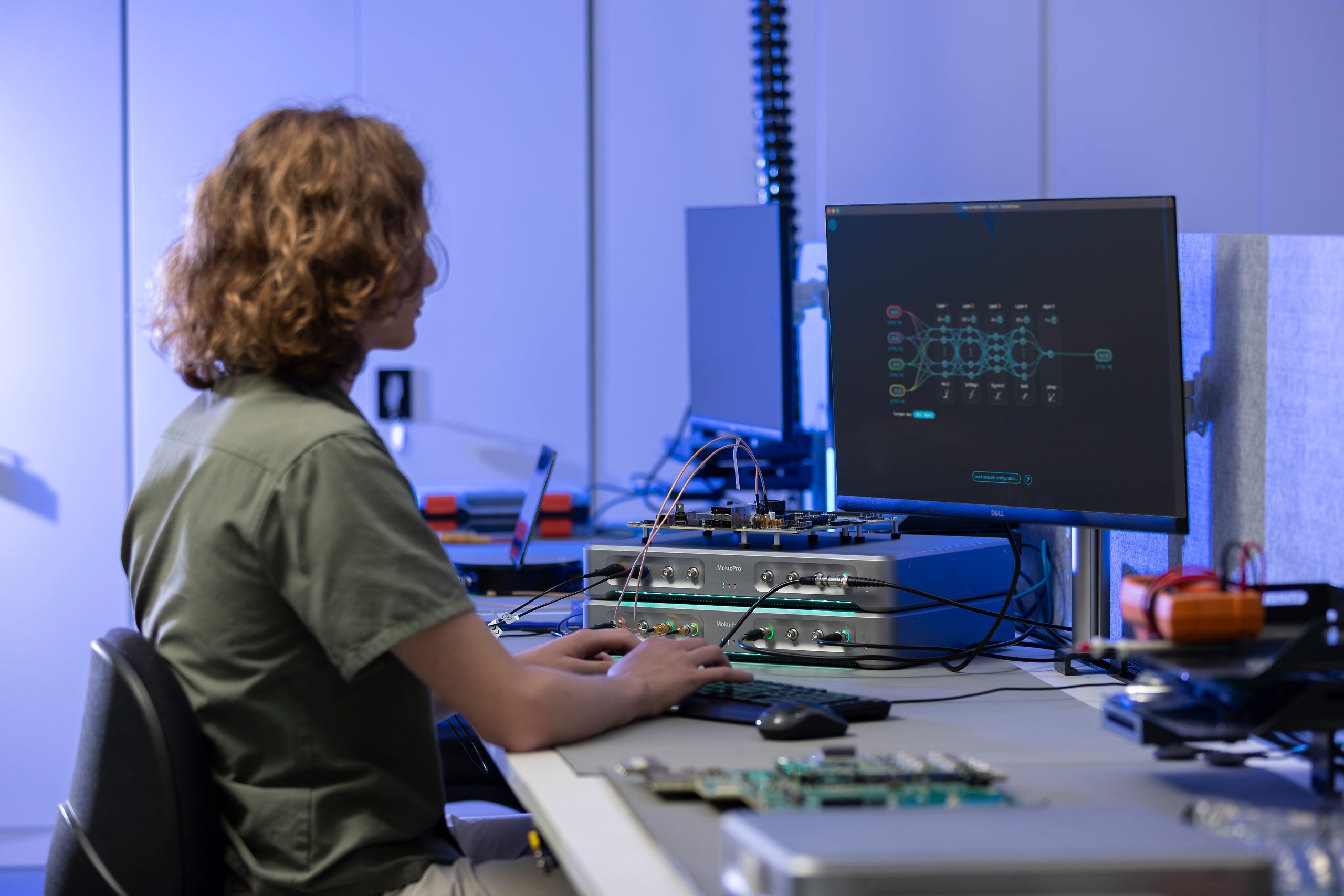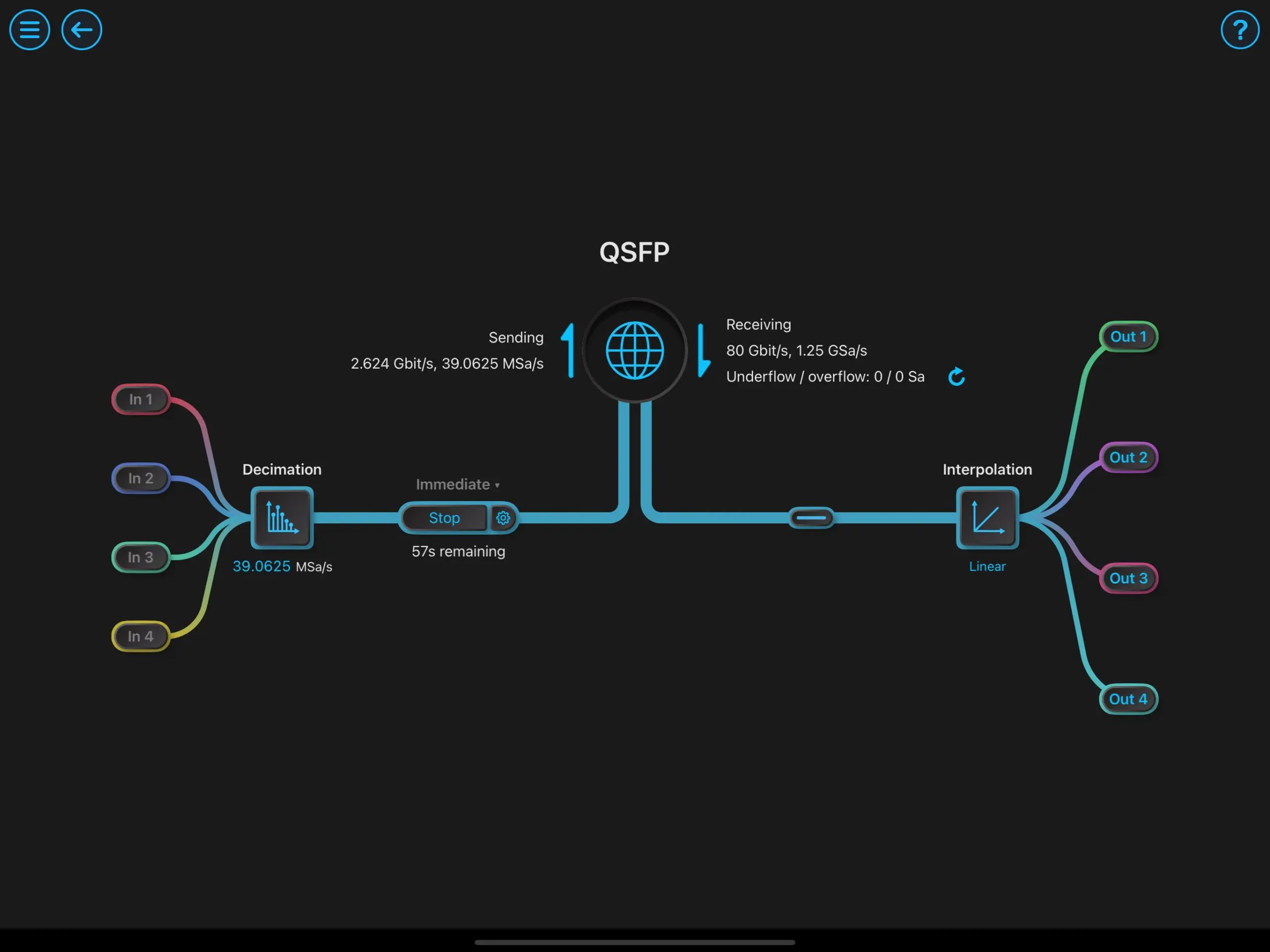Introduction to 1/f noise
1/f noise, also known as flicker noise or pink noise[1], is a type of low-frequency noise that increases in strength as frequency decreases. It shows up in semiconductors, resistors, sensors, and even natural systems, and it can limit the performance of precision electronics like ADCs, RF circuits, and oscillators. Unlike white noise, which has equal power at all frequencies, 1/f noise dominates at low frequencies and is harder to measure. Traditional spectrum analyzers and lock-in amplifiers are commonly used to measure 1/f noise, but capturing meaningful data requires long integration times. The measurement instrument must have an exceptionally high dynamic range to capture small variations while reaching frequencies low enough to accurately capture flicker noise. Many spectrum analyzers only reach minimum frequencies in the kHz range, requiring semiconductor test engineers to develop custom solutions just to accurately characterize the full frequency range of their device under test. Using a spectrum analyzer with high sensitivity, a true 0 Hz minimum frequency, and a low resolution bandwidth can eliminate the need for expensive and time consuming custom measurement solutions.
In this article, we’ll explain what 1/f noise is, why it occurs, how it impacts measurements in physics, electronics, and signal processing. We’ll also explain the best way to measure 1/f noise and make it easier to analyze, manage, and mitigate flicker noise across research and engineering applications. To learn more, register for our webinar with EE World.
What is 1/f noise, also called flicker noise?
1/f noise is a type of random noise where the power spectral density is inversely proportional to frequency. That means the lower the frequency, the stronger the noise contribution.[2]
- Flicker noise
- 1-over-f noise
- Pink noise
This type of noise is distinct from white noise, which has equal power across all frequencies, and thermal noise, which is primarily determined by temperature.
What causes 1/f noise?
Semiconductor 1/f noise
In semiconductor devices like MOSFETs and BJTs, flicker noise originates from charge trapping and detrapping at defects near the oxide-semiconductor interface or from fluctuations in carrier mobility. This makes it especially problematic at low frequencies, where it can dominate over thermal noise.
For common integrated circuits (ICs) like operational amplifiers (op-amps) and data converters, this can limit performance and introduce unwanted signal impurities.
The impact of 1/f noise on op-amps:[3]
- Since 1/f noise is most pronounced at low frequencies, the input stage of an op amp often sets the noise floor for the entire device.
- Flicker noise can lead to low-frequency drift and offset instability.
The impact of 1/f noise on data converters (ADCs/DACs):[4]
- In analog-to-digital converters (ADCs), flicker noise limits the effective number of bits (ENOB) at low input frequencies, leading to small signals getting buried in the noise floor.
- In digital-to-analog converters (DACs), flicker noise can introduce spectral impurities and reduce linearity.
- For both ADCs and DACs, 1/f noise can degrade system accuracy in regards to timing.
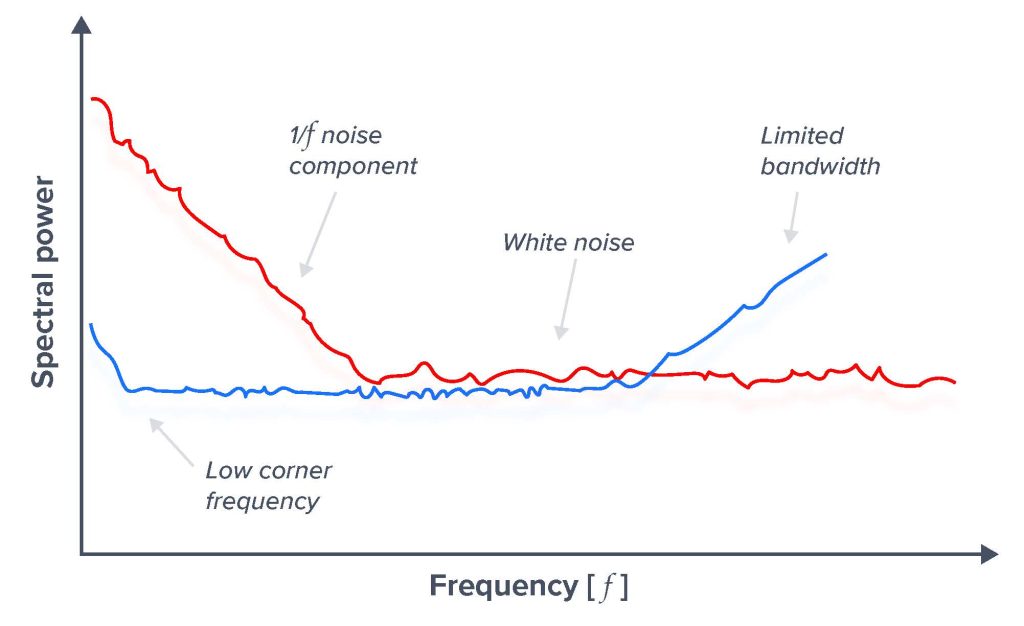
These effects are why many datasheets specify 1/f corner frequency for precision ICs, making it a critical specification to understand and measure effectively.
How does 1/f noise affect measurements?
Flicker noise can mask small signals and limit the resolution of instruments. Since it increases at low frequencies, it particularly affects long-term stability measurements and experiments where signals evolve slowly over time.
For researchers and engineers, this means designing experiments and selecting instruments that can detect key DUT signals without being heavily impacted by flicker noise.
1/f noise in physics
In physics experiments, 1/f noise limits the sensitivity of detectors measuring weak signals, such as photodiodes in optical setups or superconducting devices in quantum research. Flicker noise can also appear in time-domain stability studies, making it harder to isolate true physical effects. This affects precision time standards like quartz oscillators, atomic clocks, and superconducting cavity resonators. Using measurements like Allan variance can help understand sources of instability.[5] Using a zero-dead-time, gapless event detector like a Time & Frequency Analyzer or Phasemeter to measure stability in real time can speed test throughput, in contrast to recording data and building all analysis in post-processing.
1/f noise in electronics
In electronics, 1/f noise is the dominant source of noise at low frequencies for amplifiers, sensors, and ADCs. Precision analog circuits, RF front ends, and MEMS devices are particularly vulnerable. Engineers often need to select components specifically rated for low flicker noise.
1/f noise in signal processing
When signals are digitized and analyzed, flicker noise can distort results, obscure weak signals, and complicate filtering requirements. Understanding the noise floor of your measurement system and knowing how much of it is due to 1/f contributions is crucial for accurate results.
1/f noise in spectrum analyzers
Spectrum analyzers are commonly used to observe noise across frequencies. However, at very low frequencies, their own internal noise can dominate, making it hard to distinguish between the instrument noise floor and the actual 1/f noise of the device under test. Finding a low-noise spectrum analyzer at low frequencies can be difficult and expensive.
1/f noise in lock-in amplifiers
Lock-in amplifiers are designed to extract weak signals from noisy environments, but flicker noise can complicate these measurements at low frequencies under a few hundred MHz. Since lock-ins operate at reference frequencies, 1/f noise near that frequency can directly degrade sensitivity.
How to mitigate 1/f noise in test instruments
To reduce the effect of 1/f noise at low frequencies, Moku:Pro and Moku:Delta each carry two sets of ADCs on every input channel. One ADC is optimized for low-speed, low-noise measurements. The other is selected for high speed and high performance, ensuring the user does not need to sacrifice bandwidth or accuracy at low frequencies. Signals from both ADCs are acquired simultaneously and blended to construct an optimal measurement signal.
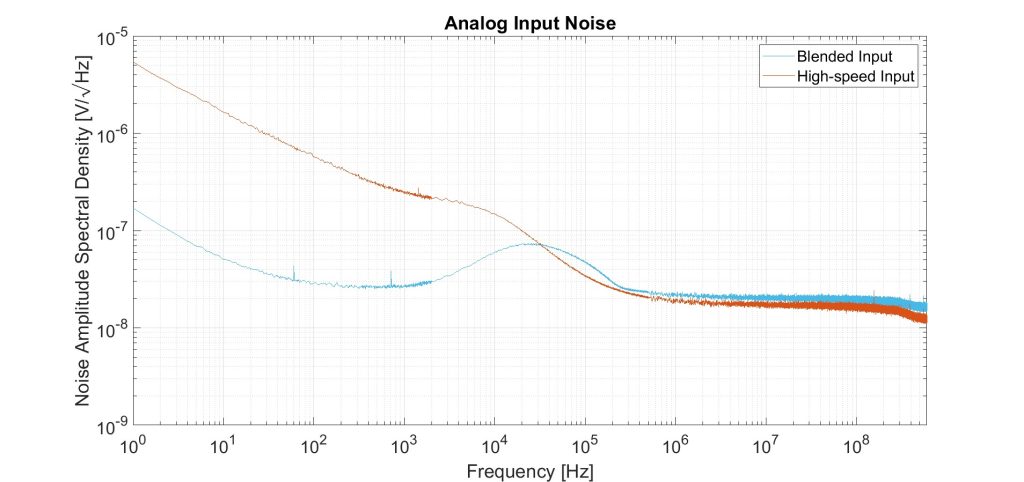
Researchers studying precision electronics, RF systems, or fundamental physics can use Moku:Delta to characterize 1/f noise efficiently and reliably due to this dual ADC sampling. Embedded within Moku:Delta are 15 instruments that can be deployed standalone or as a system, allowing you to use the Spectrum Analyzer, Lock-in Amplifier, Oscilloscope, or Data Logger to measure and record results from your measurements.
Another key strategy to accurately measure 1/f noise is a low resolution bandwidth and low minimum frequency in your spectrum analyzer. The Moku:Delta and Moku:Pro Spectrum Analyzers can observe signals down to 0 Hz, which is important for low-frequency noise characterization. These spectrum analyzers also allow the user to set a resolution bandwidth as low as 1 Hz, allowing you to accurately capture the 1/f noise without the effects of broadband noise obscuring results. A wider resolution bandwidth integrates more noise power, while a lower resolution bandwidth collects less noise power per resolution bin, leading to a lower displayed noise floor. By reducing the resolution bandwidth to 1 Hz, it is much easier to separate true 1/f characteristics from other noise sources. While 1/f noise is intrinsic to the device under test and measurement system, optimizing your measurement setup to accurately measure flicker noise can build a deeper understanding of the true performance of your device under test.
Learn more about Moku:Delta here.
FAQ
A: Yes, both terms describe the same thing: low-frequency noise with a spectrum that decreases as frequency increases.
A: White noise has constant power across frequencies, while 1/f noise grows stronger at lower frequencies at about 3 dB/decade.
A: In semiconductors, resistors, sensors, and even in natural systems outside of electronics.
A: Spectrum analyzers and lock-in amplifiers are common tools. Modern platforms like Moku:Delta combine these in one device, making measurement more efficient.
References
[1] “Pink noise,” Wikipedia, Nov. 07, 2020. https://en.wikipedia.org/wiki/Pink_noise
[2] “Understanding and Eliminating 1/f Noise | Analog Devices,” Analog.com, 2024. https://www.analog.com/en/resources/analog-dialogue/articles/understanding-and-eliminating-1-f-noise.html
[3] “MT-048 TUTORIAL Op Amp Noise Relationships: 1/f Noise, RMS Noise, and Equivalent Noise Bandwidth.” Available: https://www.analog.com/media/en/training-seminars/tutorials/MT-048.pdf
[4] “Fundamentals of Precision ADC Noise Analysis.” Accessed: Sep. 04, 2025. [Online]. Available: https://www.ti.com/lit/eb/slyy192a/slyy192a.pdf?ts=1757009681439
[5] R. F. Voss, “1/f (Flicker) Noise: A Brief Review,” 33rd Annual Symposium on Frequency Control, Atlantic City, NJ, USA, 1979, pp. 40-46, doi: 10.1109/FREQ.1979.200297.

